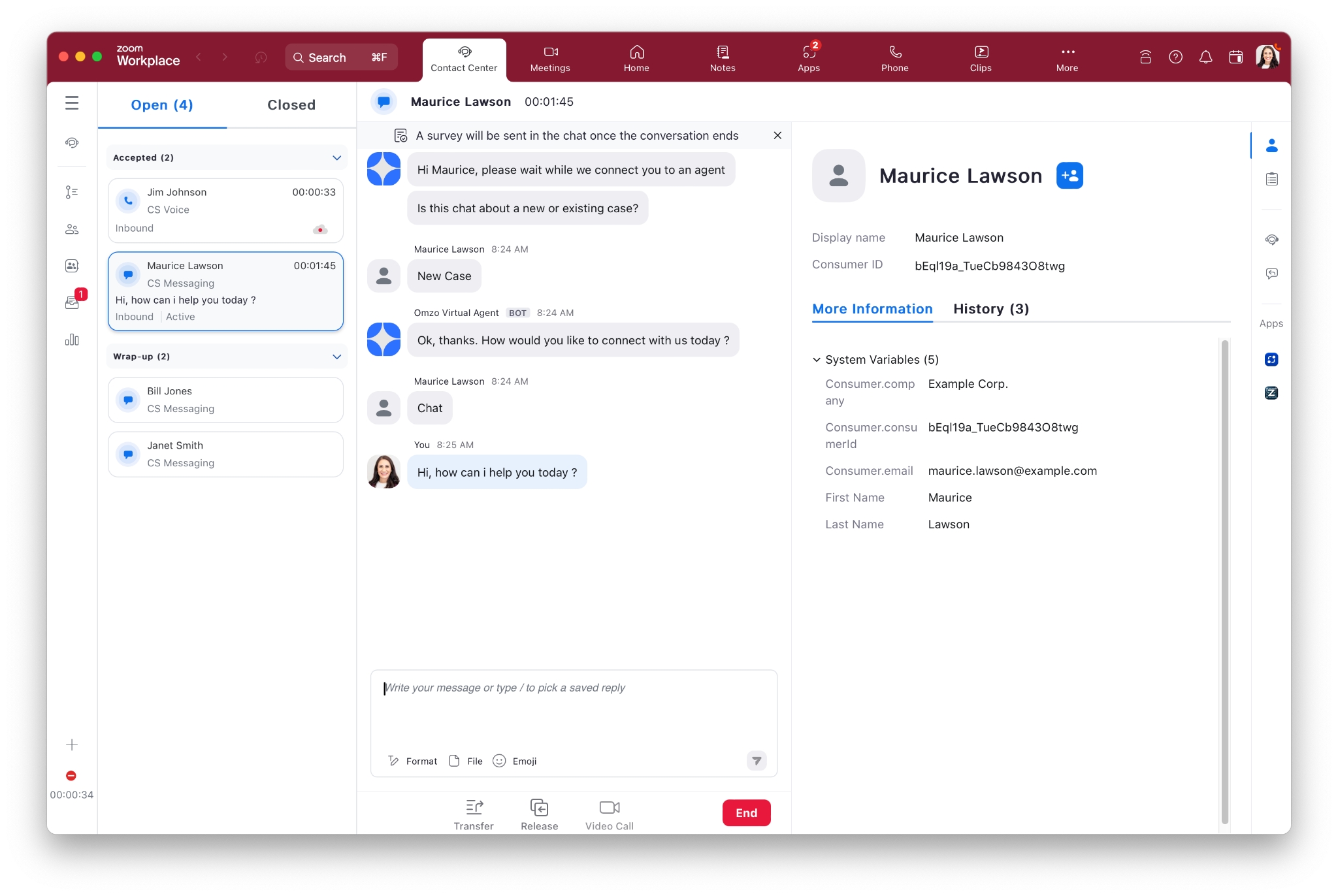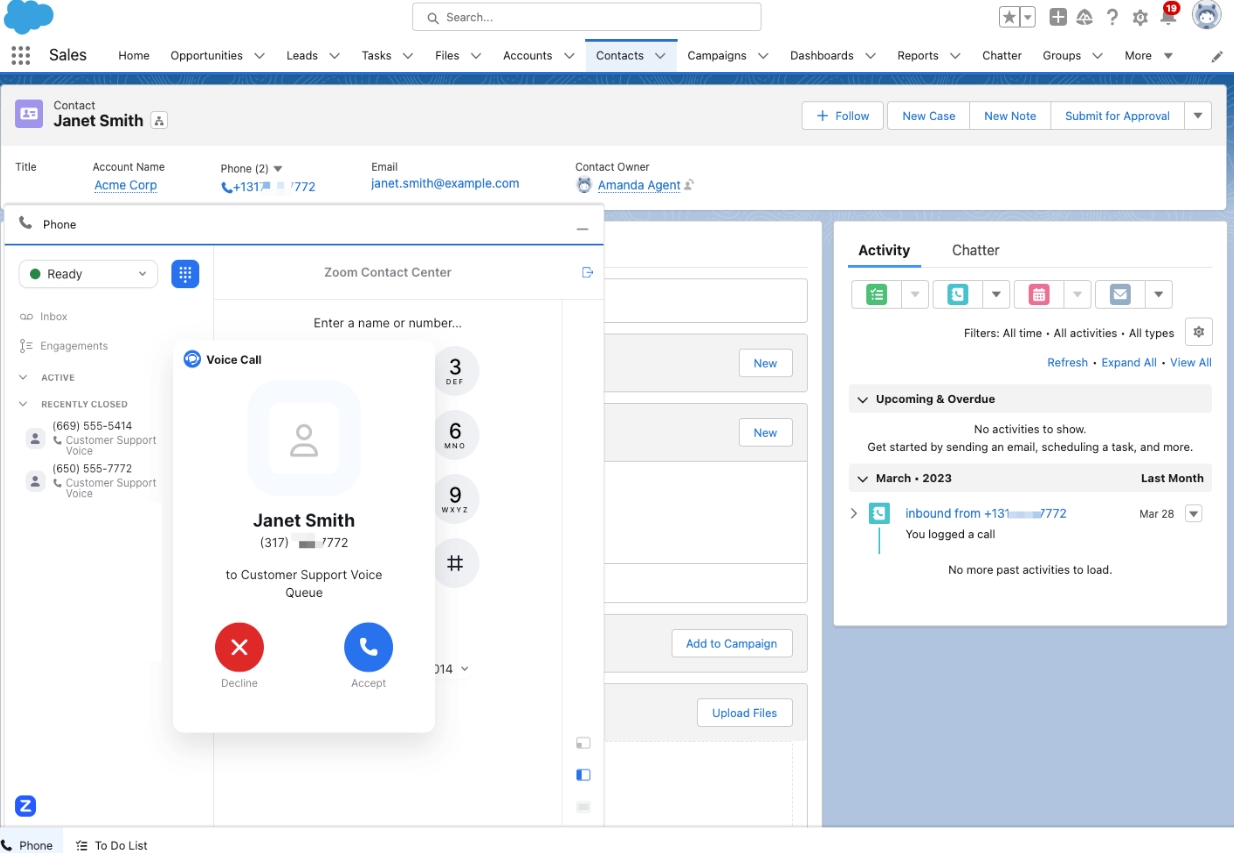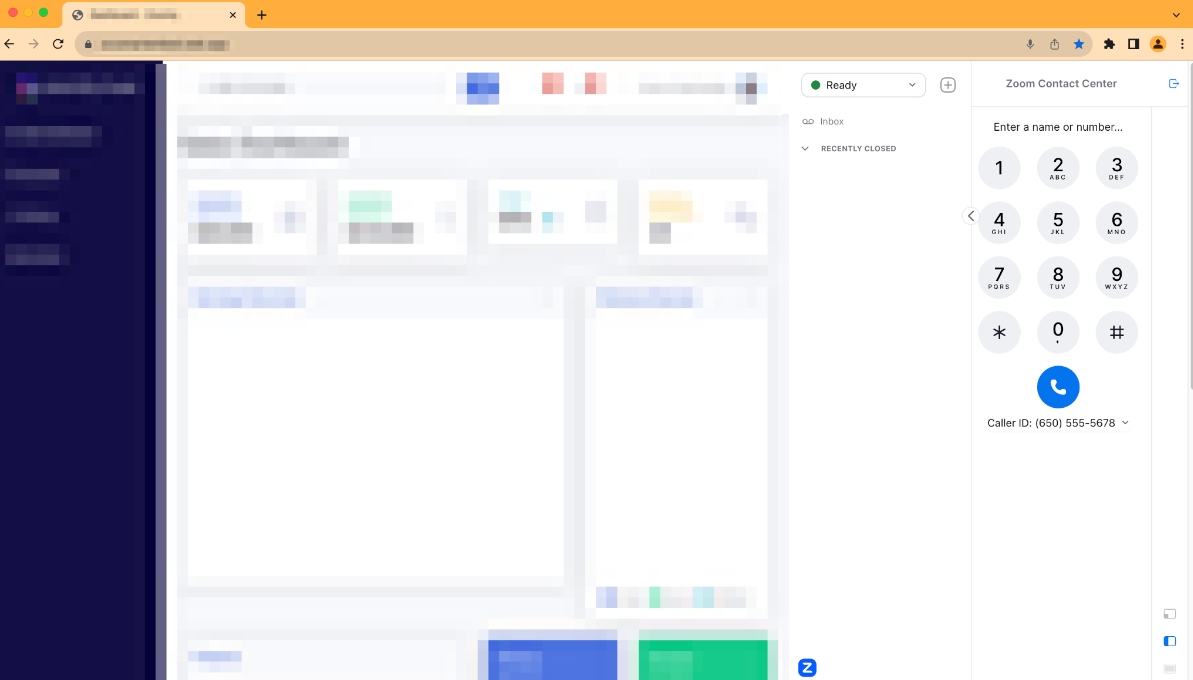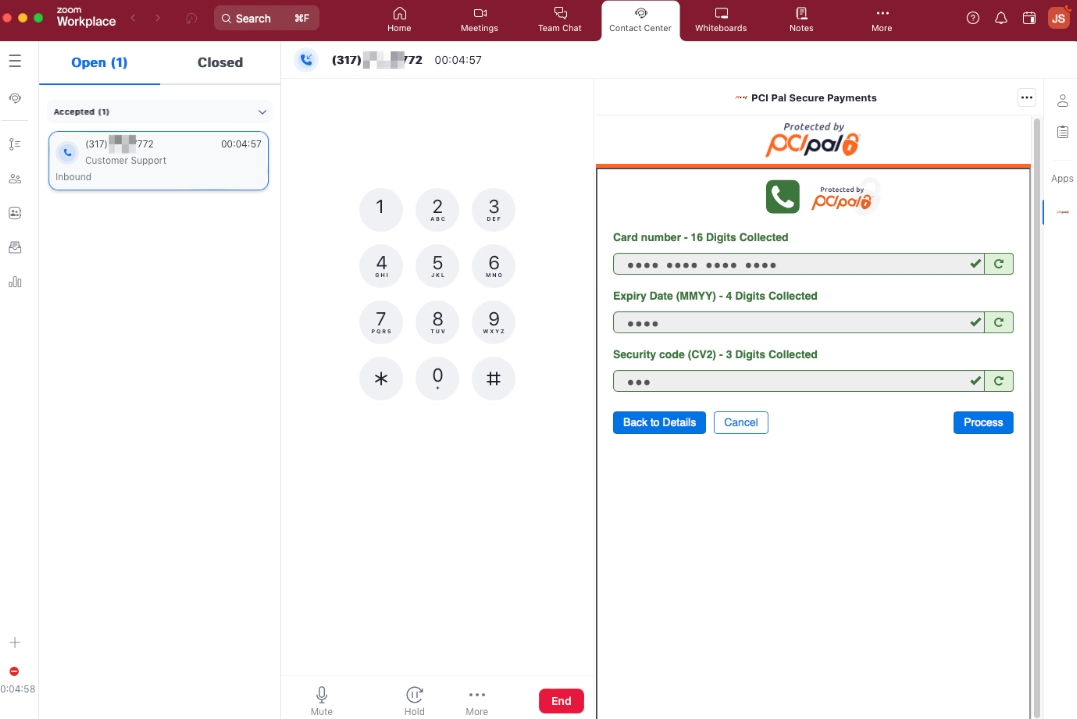Last updated
Was this helpful?
Last updated
Was this helpful?
Zoom CX offers four agent desktop deployment options: Zoom Workplace App, Progressive Web App (PWA), CRM CTI Connectors, and ZCC Smart Embed Integration.
The table below lists the channel support for each deployment option.
Our default Agent desktop is the standard interface built into the Zoom Workplace App, the same application you are familiar with using to join Zoom Meetings or make Zoom Phone calls. Agents with the Zoom Contact Center license will have access to the Contact Center tab (shown below), where they will handle their Zoom Contact Center engagements.
You can leverage the Zoom App Framework to integrate web applications into the Zoom Contact Center Agent desktop. Zoom Apps are displayed to agents on the right side of an engagement based on the administrative configuration for each queue. This allows each queue to control which Zoom Apps are displayed to the agent.
The Zoom App Framework supports both public apps, such as the PCI Pal app shown below, and private apps. Private apps are generally targeted at internal use cases and are available only to the Zoom account for which the app was created. If you have the resources to build your own web app (HTML, CSS, or JavaScript), you can integrate it seamlessly into the Zoom Workplace App.
The Zoom Apps JavaScript SDK supports both events and APIs, enabling your app to receive engagement updates and to poll for data.
The web client is available to customers that prefer to have their agents log in to Zoom Contact Center using a web browser, such as Chrome. The feature sets are similar to those available on the Zoom Workplace App.
If you prefer to have your agents work embedded inside of your CRM, you can leverage the ZCC CRM CTI Connectors, which support the following CRMs:
Salesforce
Zendesk
ServiceNow
Hubspot
Microsoft Dynamics 365
If you're using one of these integrations, agents will handle engagements inside the CRM using the embedded Zoom Contact Center integration. The screen pop and call logging functions are included out of the box.
The default behavior for the integrations is to screen pop based on the Caller ID (voice/SMS channels) or email (web chat/video channels), but you can configure to screen pop based on additional data collected in the Flow, such as a case or ticket number. Let's look at that configuration.
Zoom CCSE is a flexible solution that lets developers quickly embed the Agent into their own web application using HTML iFrame configurations. Your web developer team will add additional JavaScript code to your web app to receive the call ringing/connected events, which can be used to trigger screen pops and/or call logging within your web application.
If you're looking for an agent solution not covered above, additional integrations are available and provided by Zoom Innovative Solutions Vendor (ISV) partners. The ISV partner program includes solutions built for banking, credit unions, insurance, healthcare, and more.
You can use the feature in the app to construct a dynamic web URL based on variable data, which then pops into the system browser on the agent's computer. The URL screen pop can include standard variables, such as the caller's phone number, but can also include custom data collected by the Flow/IVR, such as case or ticket numbers.
For more information, see the .
For more information about the Progressive Web App, see the .
For more information about CRM CTI Connectors, see .
For more on Smart Embed, check out the .
For more information, see .
Zoom Workplace desktop app
Windows, Mac
Voice
Video
SMS
Web chat
Social messaging
Included in all licenses
Included with Elite and AI Expert Assist add-on license
CRM CTI Integrations
Web
Voice
Video
SMS
Web chat
Social messaging
On the roadmap
On the roadmap. Will require Elite or AI Expert Assist add-on license
Zoom Contact Center Smart Embed (CCSE)
Web
Voice
Video
Web chat
Not available
Not available





